Bill Vogeney—or “Vog” as he’s known in enthusiast circles—is a long-time Scotty Cameron collector with an extensive collection of rare and hand-crafted putters from Scotty’s early career. He has collected Scotty Cameron putters since 1992 and has multiple early handmade Scott Cameron putters, GSS and 009 putters, the best of Scotty’s OTR’s (off the rack) and over 50 putters made for various tour players including major champions. One of the “OG” collectors, and co-author of "The Art of Putters: The Scotty Cameron Story," Vog has extensive knowledge of Scotty’s design history. From time to time, we will feature articles from Vog in this new series to provide context, history and interesting back-story to Scotty’s evolution as a putter maker.
Many serious Scotty Cameron fans know I first saw his early work, made by hand “Scott” Cameron putters, at the 1992 PGA Show. While I had collected golf clubs for a decade, I never considered myself a putter collector. If I found a good putter, I typically traded it for a set of old forged blades or persimmon woods. Scotty quickly turned me into a putter collector because I thought his putters looked and felt better than anything on the market.
It was a year later I saw Scotty’s early mallet designs at “The Show” when a classic club dealer had four different Scott Cameron models. When Scotty started making putters for the PGA Tour, they were all stamped by hand "Scott Cameron." Scotty crafted them on a vertical milling machine with lots of hand shaping and grinding to get the lines just right. After making a name for himself on the tour, he branched out and started making putters for the consumer market in 1991. These putters, and his future putters for the consumer market, were milled on a computer-numerically controlled (CNC) milling machine, allowing Scotty to take his designs and create more than just one putter at a time.
Scotty decided his earliest putters made by hand would continue to be marked "Scott" and putters that were crafted on a CNC mill were either engraved Scotty or stamped Scotty if they were made for the tour. While the basic head on these four putters was the same, Scotty was able to create a different look and performance by varying the necks or the shafts. To this day, I still enjoy putters from this early era as I continue to build my collection.
There’s been a world of change in golf and with Scotty’s mallets in the last 30 years. In the 90s, many touring professionals and other discriminating golfers who preferred a mallet did so for aesthetics. In 2024, the top players who choose a Scotty Cameron putter are more likely to choose a mallet for performance, yet these same players still want a putter that looks good and need a putter with the right feel.
As a long-time fan of Scotty, I’ve seen him leverage the science in mallet design in the last 20 years, starting with the Red X models, which were his first mallets that used multiple materials such as steel and aluminum to create the larger head size, but with customizable head weights using internal weighting that could be changed in the sole plate per the length of the putter, which was a radical concept at that time. Check out the Cameron archives as they do a wonderful job of showing the development of today’s mallets. Yet his attention to detail when it comes to design and feel is grounded in his eye for classic looks, and to fully appreciate his work today, you should go back to the early days of his career. Here are some of the more interesting mallet putters in my collection that not only tell Scotty’s mallet story, but also show some of the constant experimentation evident in his work.
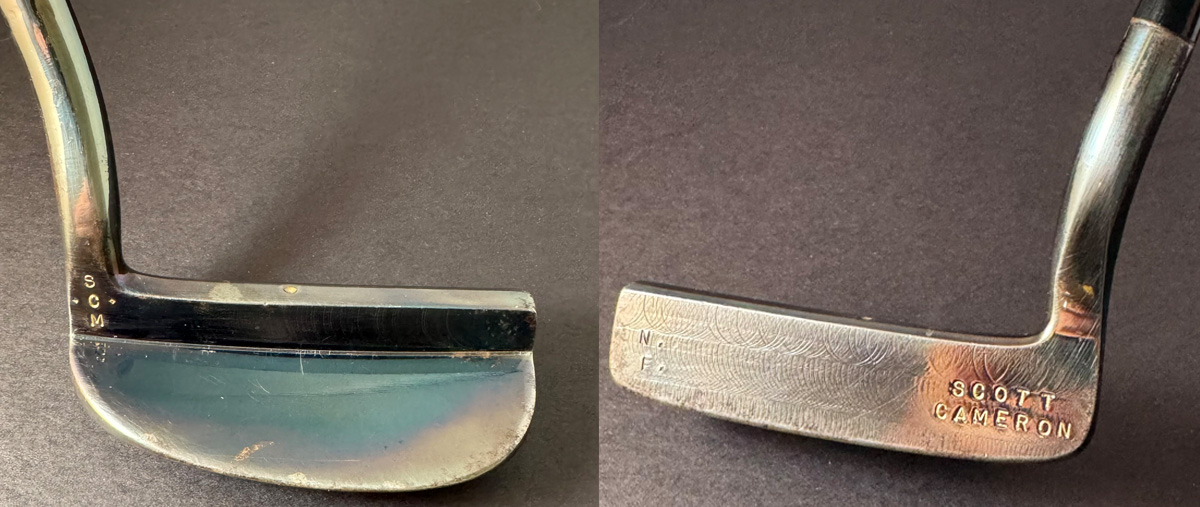
Above: This is a very early (1991) handmade mallet Scotty crafted for a three-times Open champion. I love this putter for several reasons. First off, take a close look at the milling! This style or look of milling is unlike anything I’ve seen on a putter Scotty has made in the last 30 years. The handful of putters I’ve seen with this look to the milling were all putters made by hand, and all made in the 1991-1992 era. He used a small end mill and made multiple passes across the face to create sort of a layered look to the milling. As a collector, I spend a lot of time looking at the milling of the face on a putter. A putter can really pop with the right milling, and I’ve bought putters solely because I thought the milling was spectacular. In addition, serious Cameron putter collectors should be familiar with Scotty’s very limited Chromatic Blue finish that he only uses on the occasional tour putter or very limited Craftsman model. Look at the varied colors in the finish—this is Scotty’s early attempt to do a finish that became Chromatic Blue almost 15 years later!
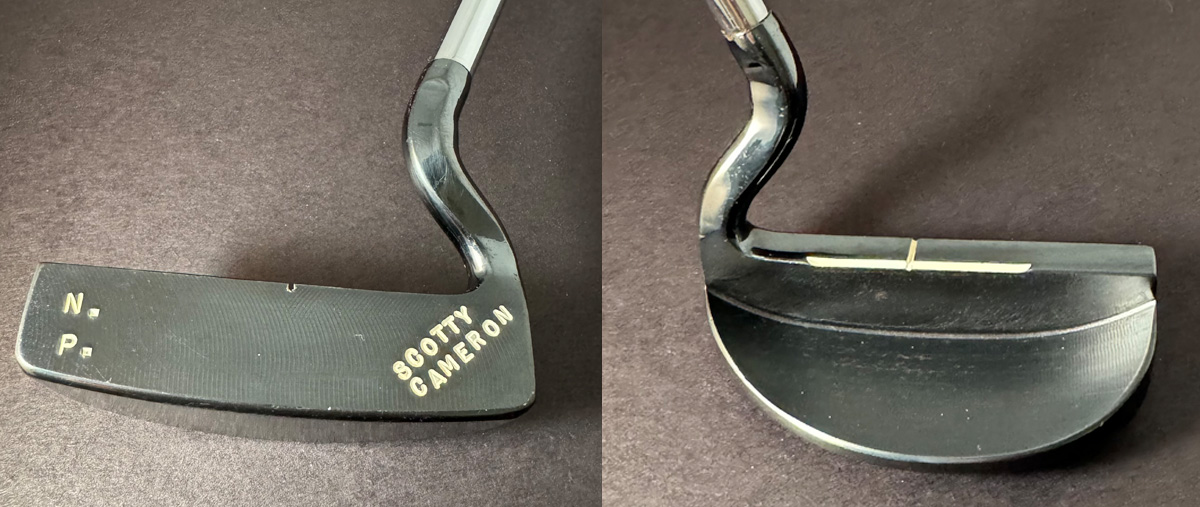
Above: Check out this mallet with an unusual swan neck Scotty made for the 1994 Open Championship winner. He was one of those players who just liked the look of a mallet, and this is an unusual one. Using his basic mallet shape in 1993/1994, Scotty created a unique look and different performance characteristics by changing the neck. Unlike a heel shafted mallet with a flow neck or plumber’s neck that has a lot of toe flow, the swan neck on this mallet creates a nearly face balanced putter. Scotty also created 40 putters with a similar look in 1993 for a golf shop in Hawaii—the MT93 is a fantastic find! The collector in me has always considered the design and rarity of the neck as one of the key factors in deciding whether a putter becomes part of my “stash.”
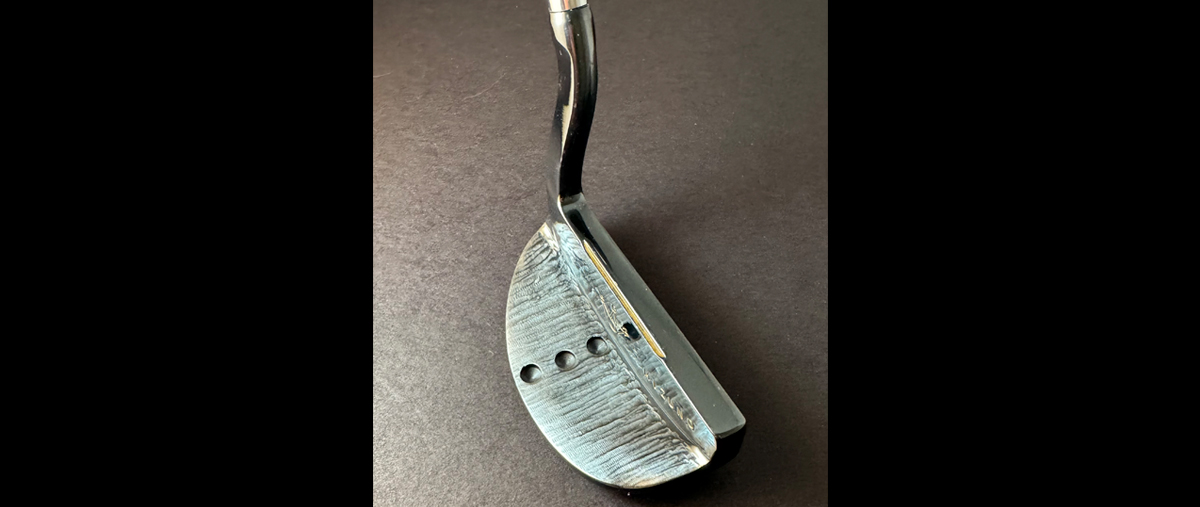
Above: This is a tour prototype that eventually became the ultra-rare Scottsman 947. I love the look of the brushed flange on this one, however a closer inspection of Scotty’s work here shows a lot of metal was removed as well. A brushed flange to reduce glare and head weight! I must admit, seeing a brushed flange on a few of those early Scott Cameron putters in 1992 got my attention, and I’m still on the search for good examples. One more thing: take notice of the alignment dots milled in the flange; they aren’t straight, are they? They’re curved to the heel to visually reinforce a “gated” stroke. Remember the Detour putter from 2006 with the curved flange line? This is proof Scotty was thinking about that concept nearly 15 years earlier.
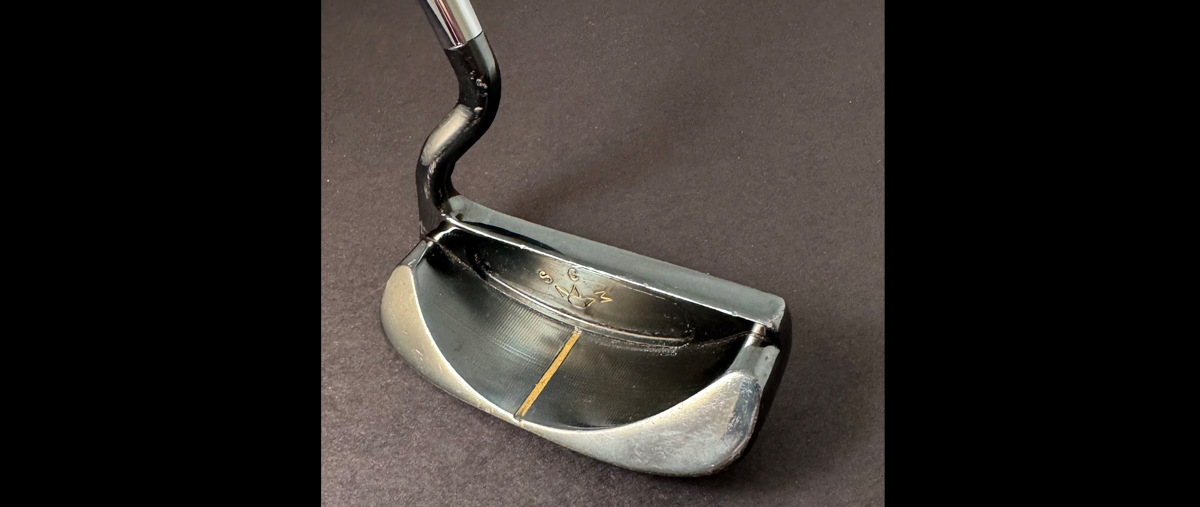
Above: This old Scott Cameron has a similar neck to the previously shown putter stamped "N.P." above, but is a mallet shape, with a twist. This has more heel-to-toe curvature of the flange than the other putter, and more than any other mallet I’ve seen. Instead of a rounded flange like most of the mallets Scotty designed at the time, the trailing edge of the putter has a very square look to it, somewhat reminiscent of the Newport Squareback Scotty introduced around 2010. How would you have liked to be an early fan of Scotty to order a putter like this one?
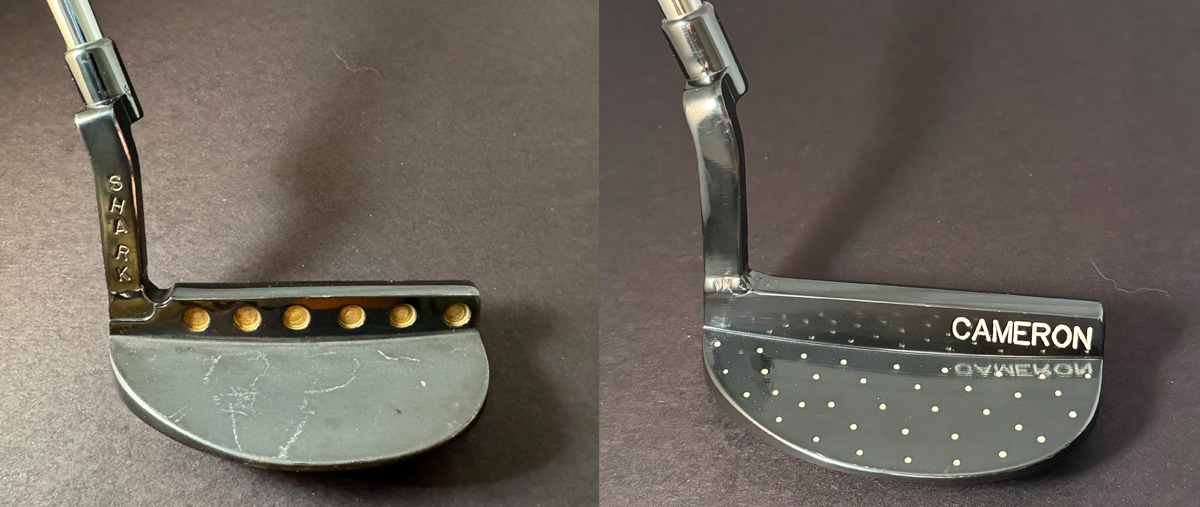
Above: Here are two putters with a different look and feel, courtesy of a plumber’s neck. On the first putter made for Shark, you’ll notice Scotty appears to have taken some weight out of the back wall of the putter. The Shark putter also has a little “scoop” to the topline-something that doesn’t have any functional purpose, but clearly was done to fit the player’s eye. If you have a good eye, you might see a resemblance to the Titleist La Costa model. On the other putter, Scotty used snow across the entire flange to reduce glare. A putter with a plumber’s neck usually has a little less toe flow, but the neck placement to the far side of the heel of the blade gives both these mallets a lot of flow.
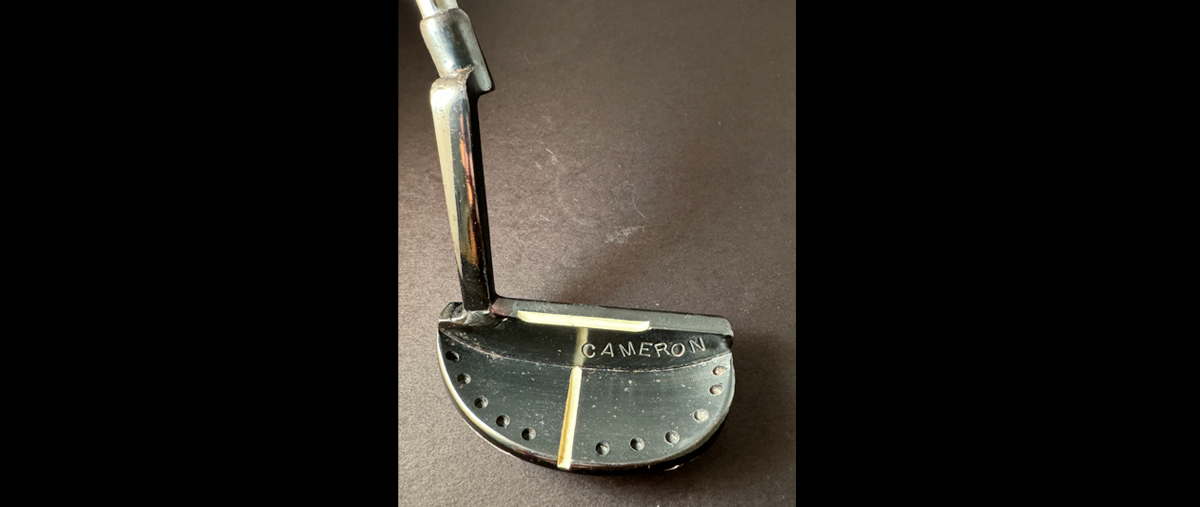
Above: Here is a handmade version of Scotty’s early mallet design but with a mid-length plumber’s neck, slightly offset from the heel side. Notice the ring of milled dots around the edge of the flange. Was this for decoration or function, as they have the impact of lowering overall weight? Either way, I like the look! I’ve seen one other mallet putter like this, but the dots around the edge of the flange were hand- stamped and not milled; both are among a few “Garage” Scott Camerons he made in 1996. The other thing to notice on this one is the alignment—a flange line plus a perpendicular line across the top of the putter. Scotty continues to evolve how he uses the larger real estate of mallets to create prominent alignment options that benefit players.
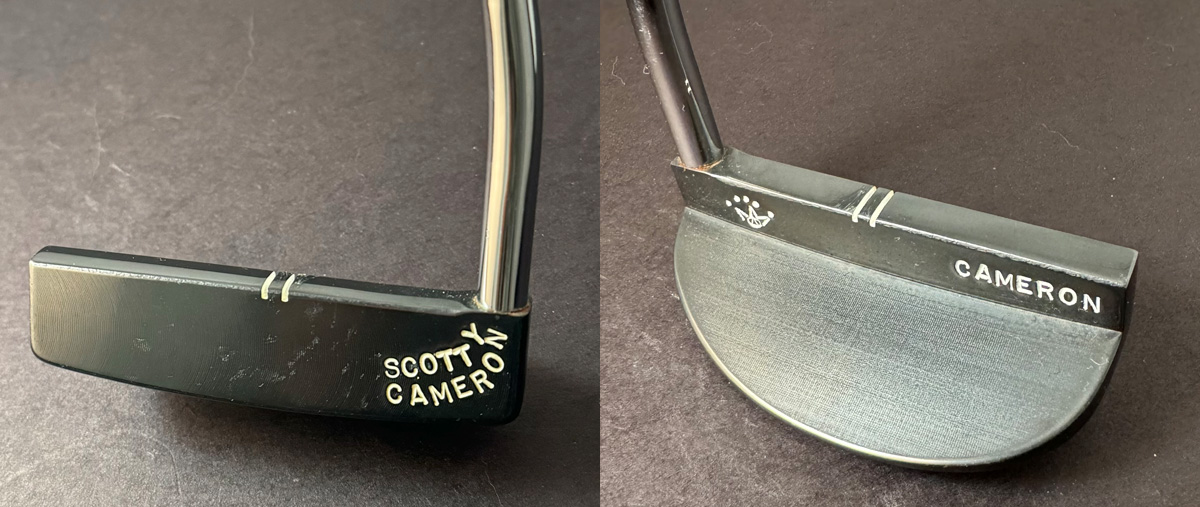
Above: This early tour prototype mallet would eventually become Scotty’s Del Mar model after joining Titleist in 1995. You see the similarity in the mallet shape, but this model has a double- bend shaft that sits over a spud on the topline of the head.
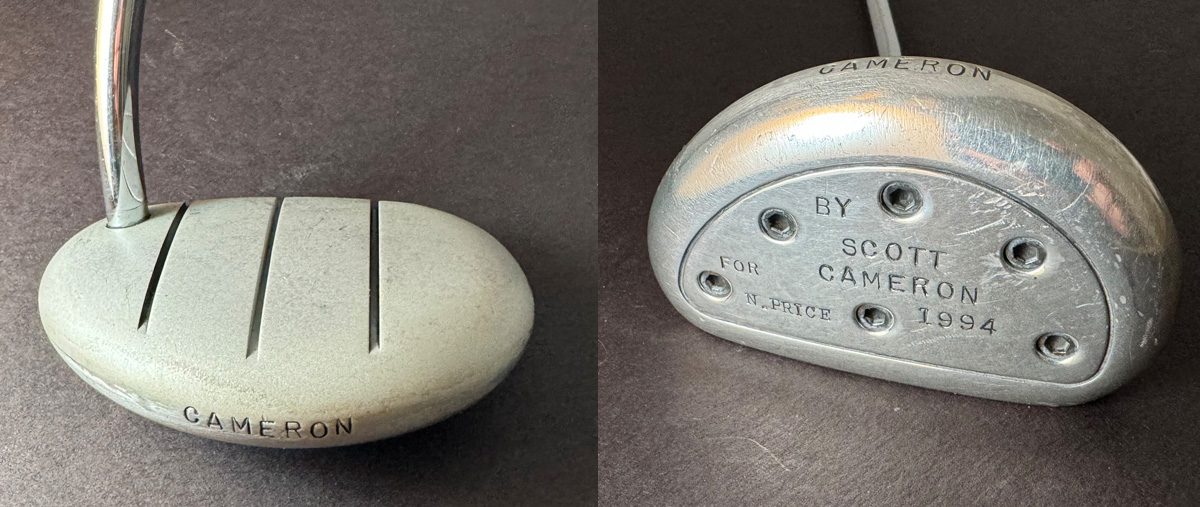
Above: Around the time that Scotty joined forces with Titleist, he started experimenting with different designs. Both these putters were made for the 1994 Open Champion. Milled from aluminum for a soft feel, you can see his incorporation of a soleplate where weight could be added; ultimately a similar design was used in his Caliente Bolero model which was introduced to consumers in 1995.
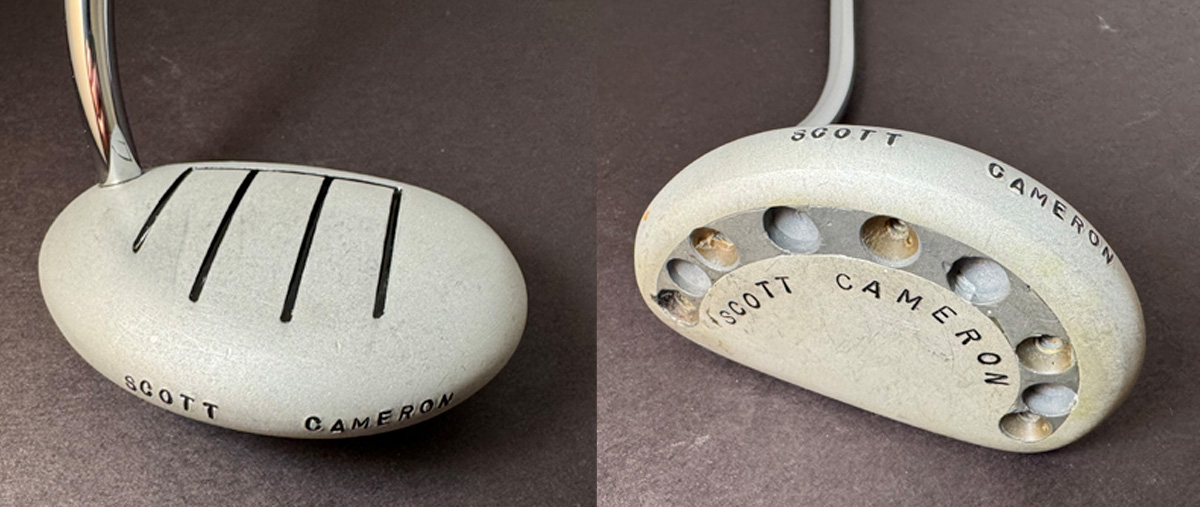
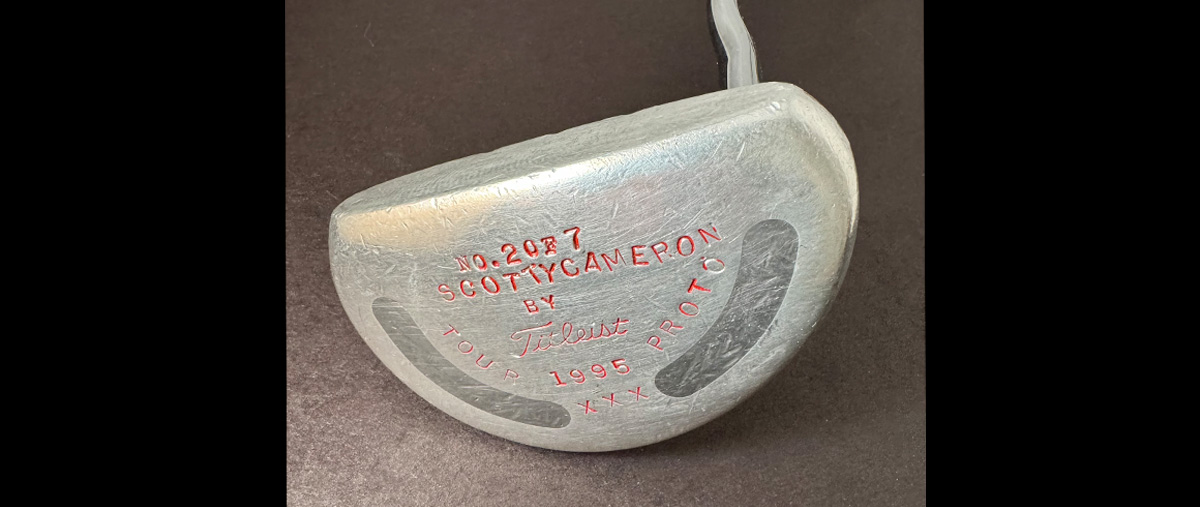
Above: The next group of putters show Scotty’s use of aluminum and lead—another early use of multiple materials to improve forgiveness and add weight. You can also see his experimentation with different alignment aids, something that continues to this day in his new Phantom lineup. The Scott Cameron mallet with multiple lines on top is likely the oldest of these putters, probably from early 1994 as it’s not marked Titleist. You can also see multiple holes Scotty drilled on the bottom of the club, even after he hand-milled the cavity for the lead in the sole—another example of the experimentation and refinement in these early prototypes. The 1995 prototype shows some slightly different weight ports milled in the sole.
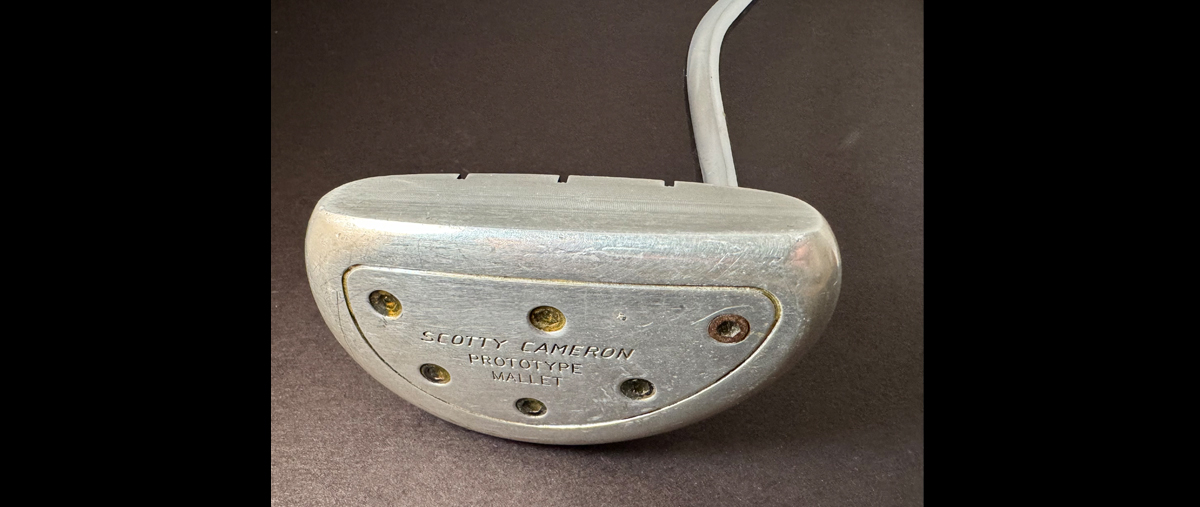
Above: This 1995 hand stamped tour was likely the last of his prototypes before finalizing the design that would become the Caliente. This was one of 100 made for the tour and encompasses all the changes in the Caliente’s final design.
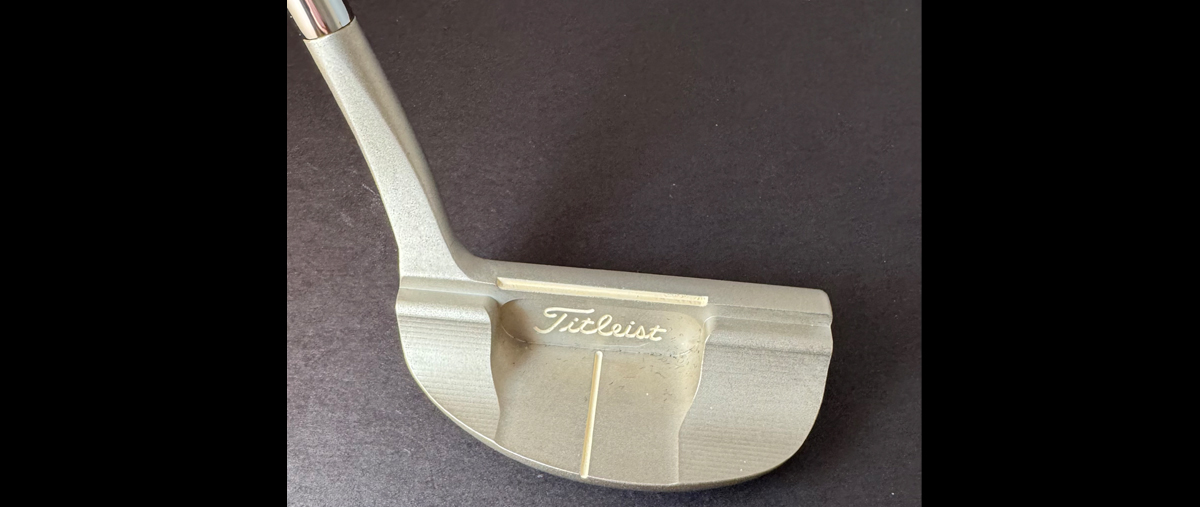
Above: Later in the 1990s Scotty would develop another new mallet, the Del Mar 3.5, incorporating the classic mallet size but with a pocket to create improved forgiveness from the heel and toe weighting. This shape was preferred and used by several different major champions.
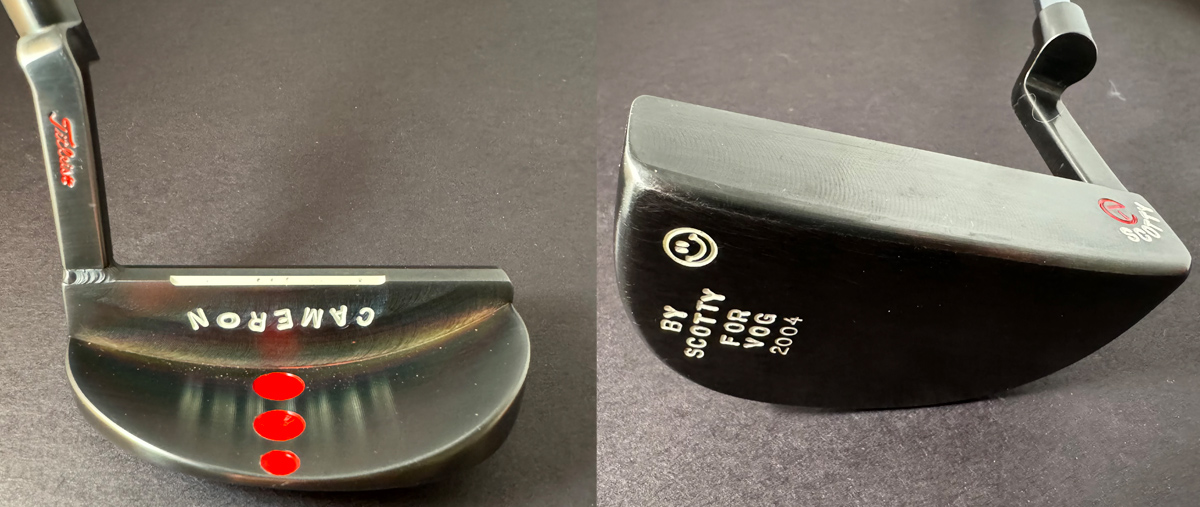
Above: Around the same time, to appeal to several different pros who preferred a mallet, Scotty also introduced what is known as the JAT (a saying of Scotty’s well-known in insider circles that stands for “Just a Thought”), which originally was created for the 2017 Masters Champion at the 1999 PGA using one of his early mallet designs, but updated with one of his newer neck designs taken from the 1998-1999 Coronado 2 blade. Introduced to the tour with a variety of necks or shaft designs into the head, Scotty could accommodate a variety of different strokes with one basic design. The putter shown is a prototype he made for me from studio stainless steel (SSS) in a matte black pearl finish and plumber’s neck. The alignment dots on the flange were inspired by a putter that he made for the Spaniard to use at the 2000 US Open at Bethpage.
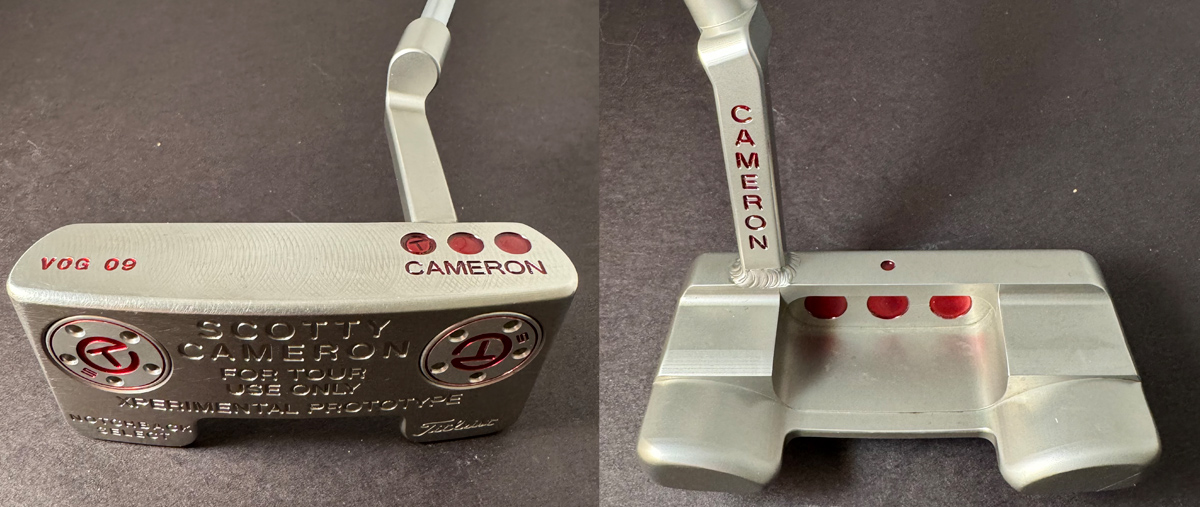
Above: Even though the Cameron archives do a great job showing the evolution of Scotty’s mallets in the last 20 years, I reached into MY archives to show you a few different looks. Here's a prototype from 2009 that might be new to you. Using the Newport Squareback head, Scotty milled a notch into the flange that was later seen on the Newport 2 Notchback head. The purpose of the notch seems to be twofold: not only does it provide a nice visual aid in alignment, but it also adds more weight to the heel and toe, improving forgiveness. This has a stubby look with the approximate dimensions of Scotty’s early mallets. Also notice the length of the neck: not a long neck, but longer than a standard plumber’s neck.
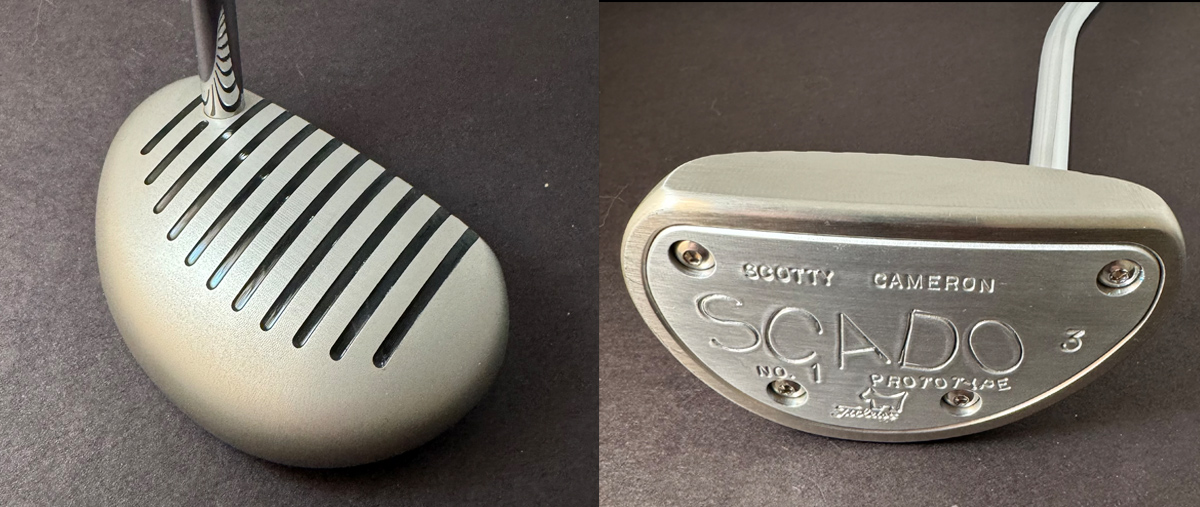
Above: This next putter from my collection was clearly inspired by Scotty’s love of the 70s Zebra putter; admittedly Scotty says the Zebra was the putter that really got him interested in club design. In the early 2000s, Scotty made a precious few of these mallets for the tour, for the International Cameron Collector convention, and a handful for an invitation only event for the most avid collectors. SCAD stands for the Scotty Cameron Appreciation Day that took place for the better part of two decades.
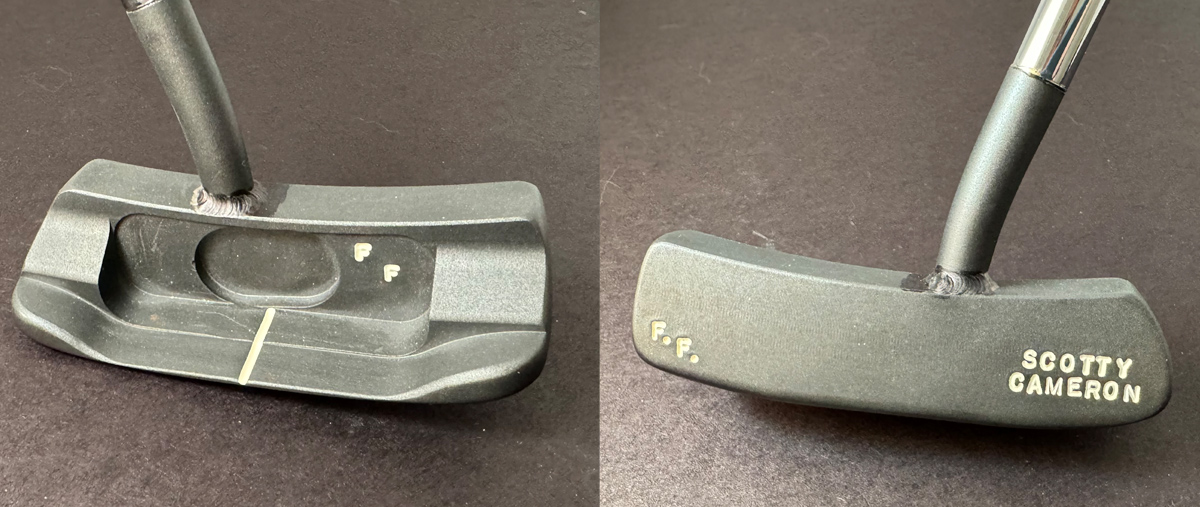
Above: The final prototype from my collection, age unknown, is absolutely a one of a kind and an unusual example of Scotty’s resourcefulness. The putter appears to have been made from a Big Sur head, a design Scotty did for long putters with a very heavy weight and long blade. Yet this putter has a very short and stubby head. Scotty basically took half the head and ground it away to get the shape right.
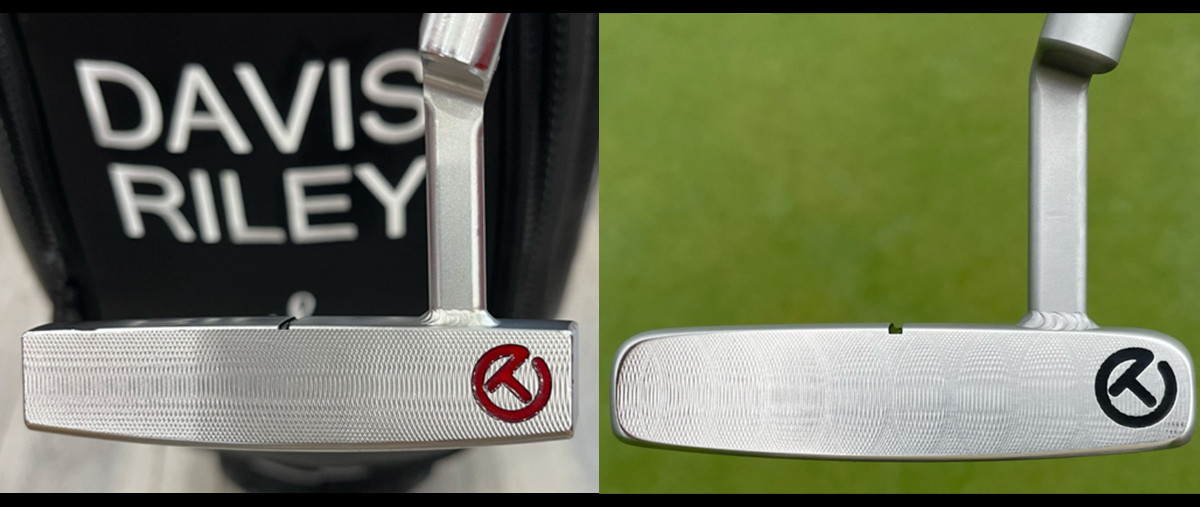
Above: In looking through some of the Scotty Cameron tour slideshows, I was on a mission: find my favorite mallets. I love the look of mallets, especially those with a plumber’s neck. This first putter shows a perfect example of something that would fit my eye and stroke! Compare it to this next putter, which I bet was made for Charley Hoffman.
He seems to be one of those old school guys who like the look of mallets. Charley also likes a putter that seemingly “melts into the ground,” as Scotty once described it. Notice how as the topline transitions into the heel and toe; just how rounded those edges are. THIS putter melts into the ground. Over the years I’ve seen many pictures of mallets that Scotty tweaked for Charley, and they all have this kind of look. As a bonus, there are two important things to remember from these custom tour mallets if you seek to be a serious collector who likes Scotty’s craftsmanship.
One of the things that has made Scotty so successful is he’s a good listener; he understands what tour players want in a putter and is the best at translating it into a final product. Secondly, as a collector, it pays to have an eye for detail and design. Over the years I’ve been able to acquire quite a few old tour putters that on first glance didn’t look any different than the next Newport, Coronado, etc. Sometimes it was the radius of a leading or trailing edge, the thickness of a flange, a stubby look, etc., that told me the putter was something special. Something Scotty spent a lot of time on to get THAT putter just right for a tour player. As a collector, what more could anyone want?
As a final thought on mallets, a few years ago I had a chance to talk to the legendary Hank George, who worked closely with Scotty for over two decades, about some of the changes to the putters that tour players were putting in their bag. He spoke of three changes: the move to heavier putters, putters with less loft, and more mallet designs. His explanation for this evolution was the improvement in agronomy. It wasn’t that long ago that there was more variation in the condition and speed of the greens on the PGA Tour. Players would choose to have a heavier putter on slow greens and a lighter putter on fast greens. They would use a putter with more loft to get the ball rolling above the grain on the old-style Bermuda greens and less loft when they played on Northern Bent greens, but advances in hybrid Bermuda strains of grass have created grass with less grain. Greater consistency in conditions meant faster green speeds and more consistency in putter specs, which eventually led to shorter, more controlled putting strokes combined with heavier head weights.
I hope you’ve learned a little about Scotty’s history; I am a big believer that to appreciate his current designs, it helps to understand his history.
